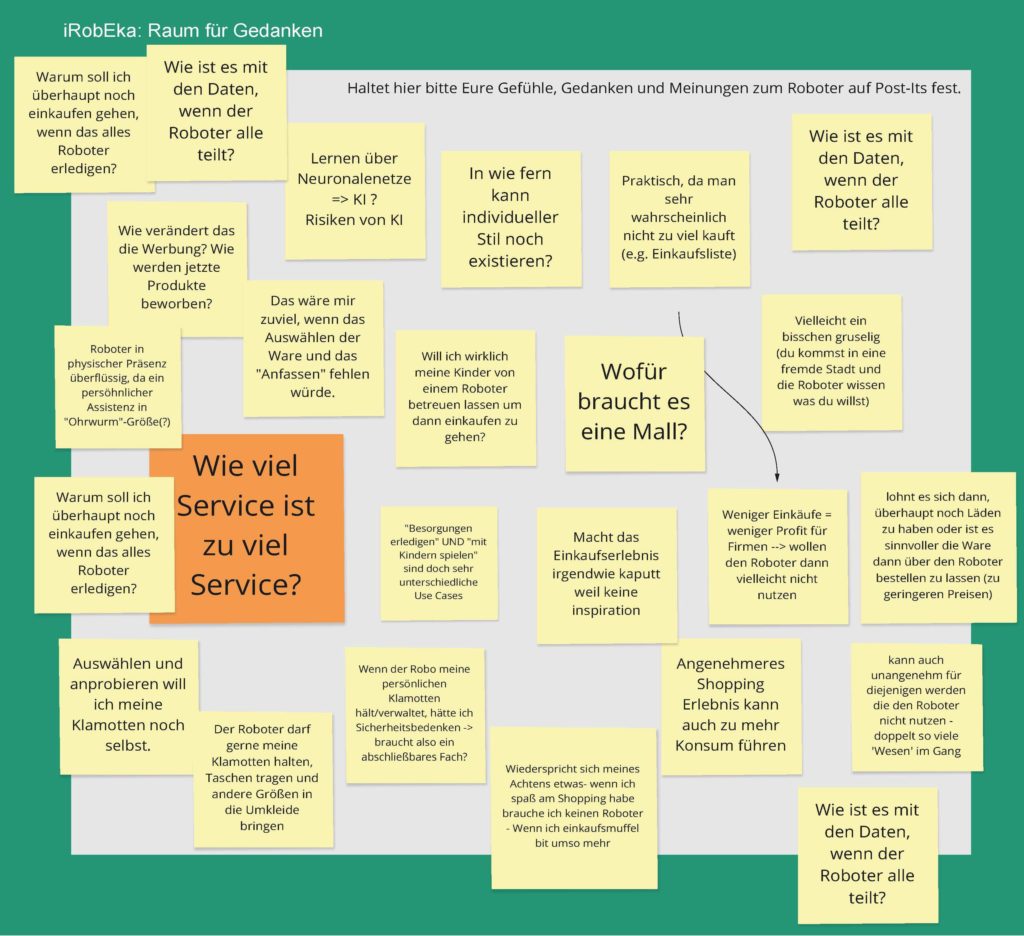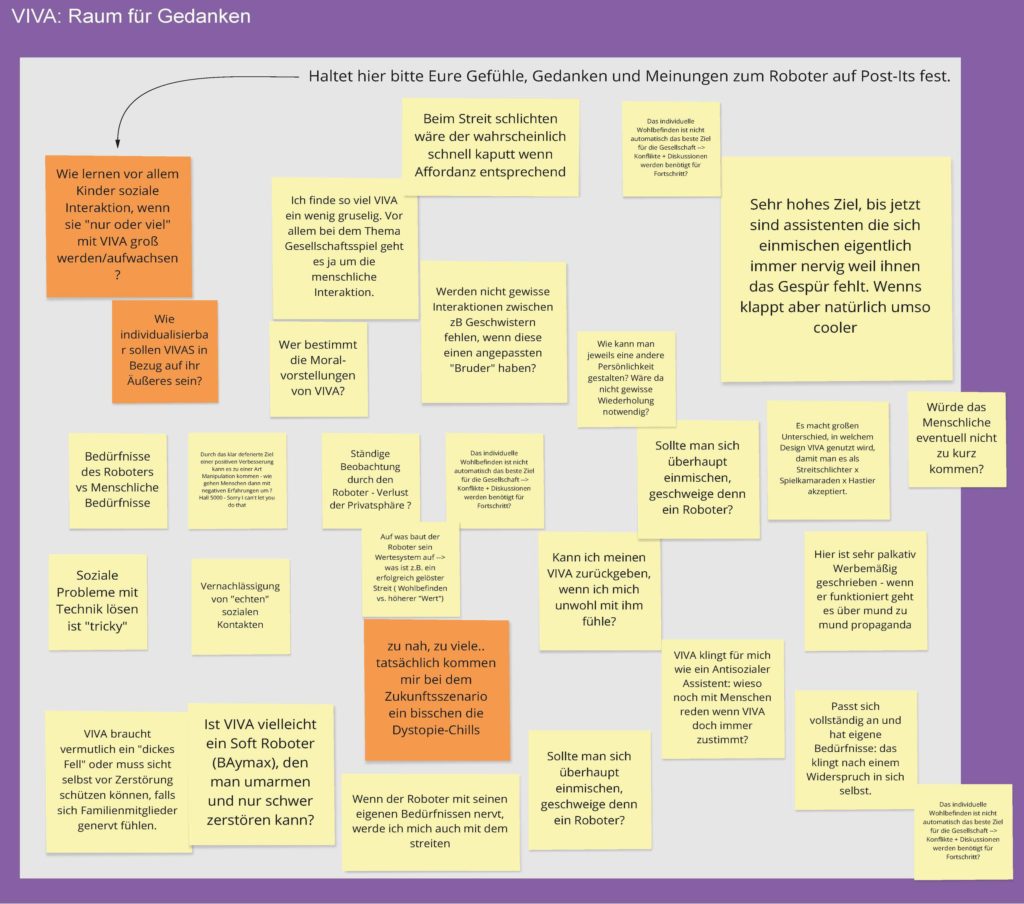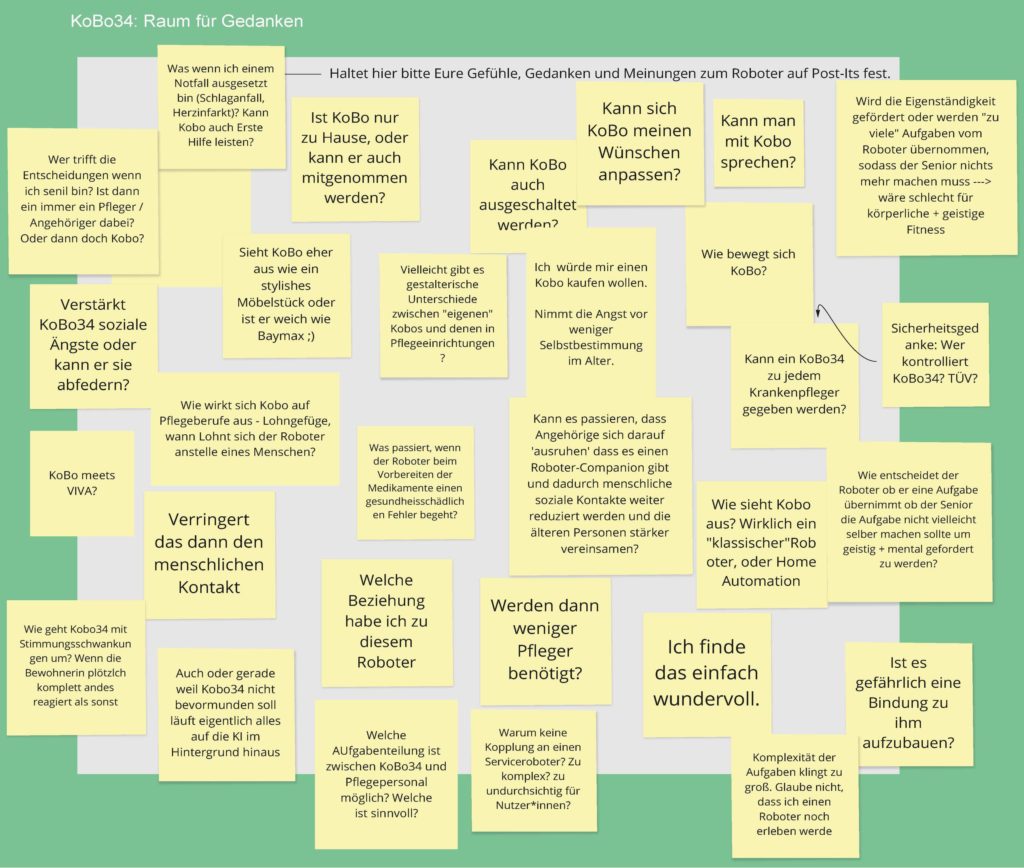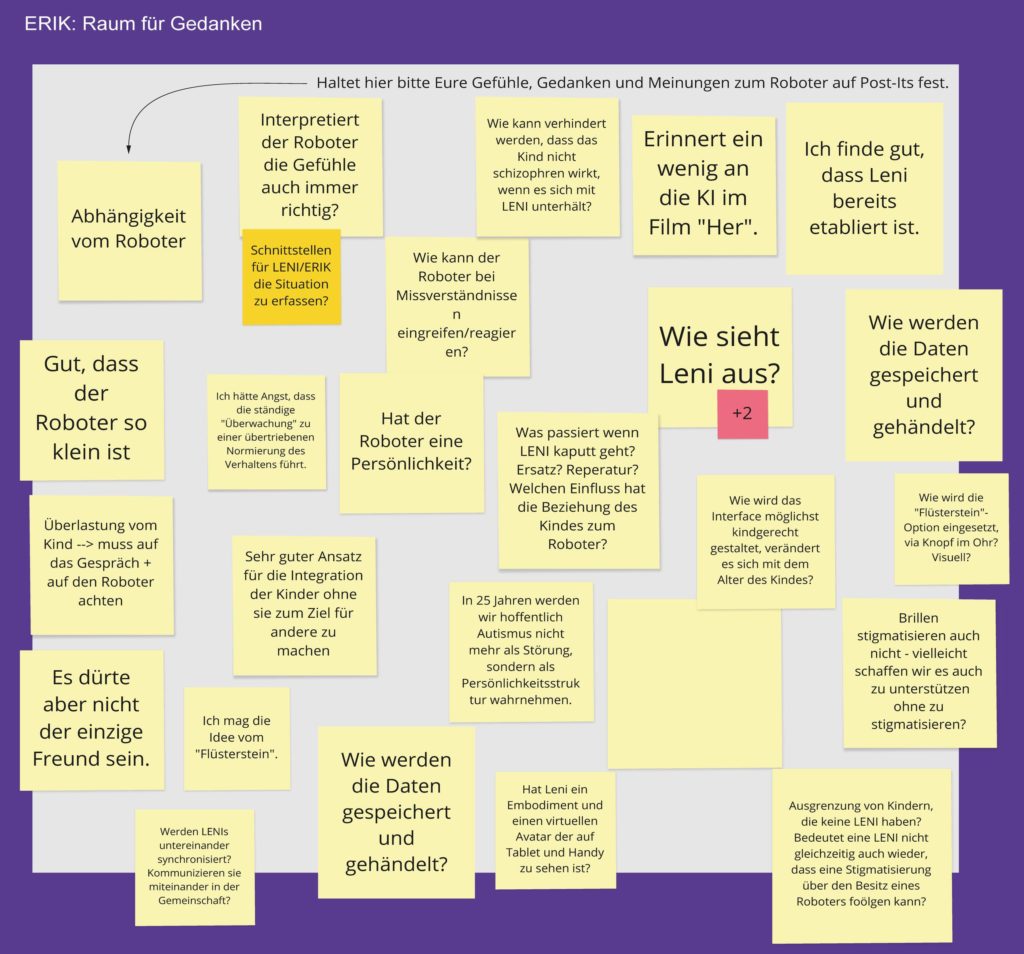On April 9th of 2021, we conducted a half-day online workshop about “robot design fiction” as part of our project GINA. Together with participants from four of the eight projects funded by the Federal Ministry of Education and Research (BMBF) as part of the funding line “Robots for assistance functions: interaction strategies” (RA2), employees from the University of Siegen and the Hochschule Düsseldorf (HSD) as well as external role players looked at four different visions of a future world with robots. These visions had been developed beforehand, in cooperation with the participants of the four RA2 projects. They were based on the participants’ vision of how the robots they had been working on during the project might look like and be used in the year 2045. In the workshop, the group speculated, discussed and enacted in what kind of world we would live in if these robots had already arrived in our everyday lives. Which stakeholders will be involved in this future world? What kind of different emotions, reactions, opinions and experiences might emerge? What are the societal consequences – positive or negative – or conflicts that might arise?
Overall, 16 people participated in the workshop. It started with a brief introduction to “design fiction”, the method used in the workshop. Afterwards, the participants were given some time to reflect on future scenarios and fictional product flyers from the year 2045 and to ask questions or state their thoughts. For each of the four visions there was a moderator who responded to these questions and comments.
After this free exploration phase, the participants formed four groups and imagined how living with one of the four robots might look like. Which emotions, opinions and experiences might people have in those different versions of the future? Additionally, the participants listed stakeholders that might be influenced by or be in contact with the respective robot. They thought about which fictional opinions or attitudes these people might have toward the robots and what kind of experiences they might have with or because of them. After this, the participants entered a kind of “future dialogue”. Each of them assumed the role of a fictional character, and they discussed with each other while representing the interests of possible future stakeholders.
A therapist noted that the seamless data transmission of the robot enabled her to analyze and discuss difficult everyday situations more effectively during her therapy sessions with an autistic child and to make significantly better progress. By contrast, a father claimed that it should be the children’s decision if they want to talk about something or not. He criticized the constant monitoring and transmission of emotional data for therapeutic purposes. In another dialogue a sweets manufacturer stated that they had experienced a decline in sales because there are no impulse purchases anymore due to customers letting robot assistants do their grocery shopping. An older person, however, described how thankful they were because these shopping robots can manage difficult and stressful situations for them. The future dialogues made clear what kind of societal consequences and conflicts might arise in the future regarding a life with robots.
Finally, we discussed the method of design fiction, the workshop concept and the results with the participants.
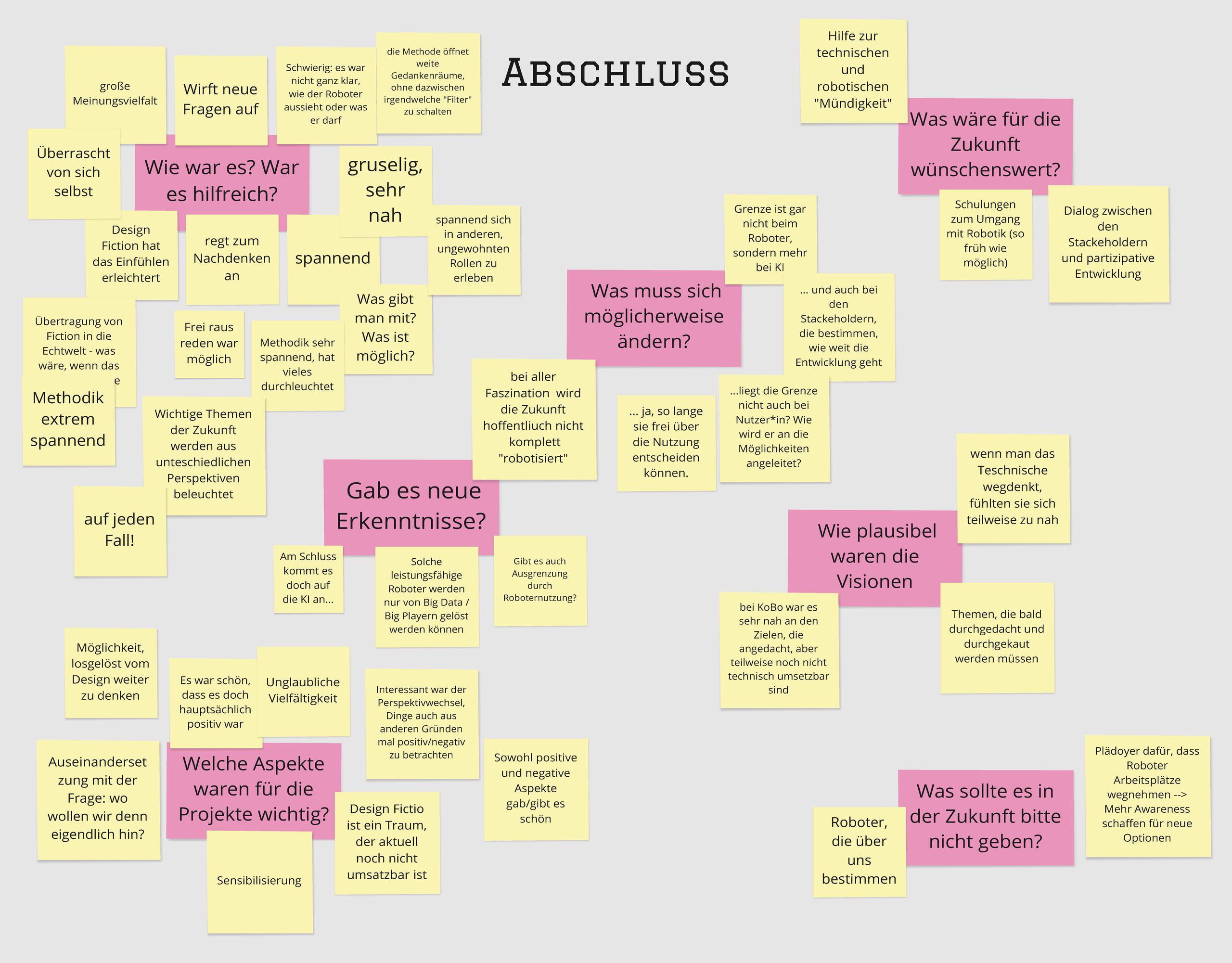
By working out which future might be more desirable than others, the participants were able to anticipate how robots should be designed to facilitate a positive coexistence with the various stakeholders. The workshop conveyed valuable impressions, insights and impulses regarding the ethical, social and societal contexts of human-robot development. Moreover, the method of design fiction was received very well by the participants, and some of them were still concerned with the workshop’s topics even days later.
We would like to thank all participants for a great workshop!
